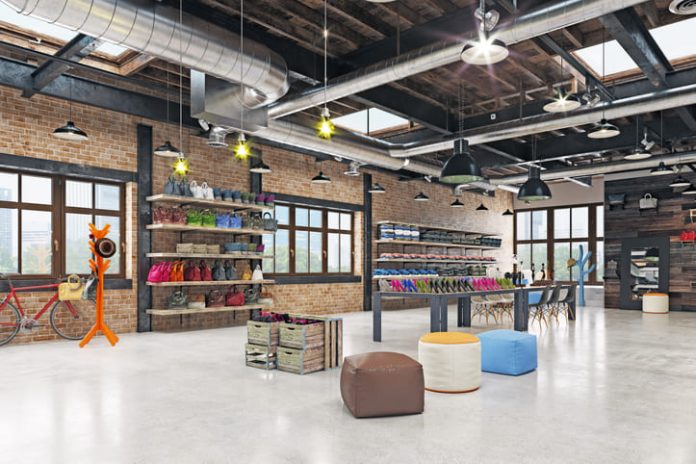In the competitive world of retail, the ambiance of a store can significantly influence customer behavior and overall sales. As we approach 2024, innovative interior design trends are set to revolutionize retail spaces, enhancing the shopping experience and driving business success. This article delves into the key interior design strategies that can elevate retail shops, creating inviting and dynamic environments that captivate consumers and boost profitability. By understanding and implementing these trends, retailers can not only attract more customers but also foster loyalty, encouraging shoppers to return time and time. Let’s explore how thoughtful design can transform retail environments and create memorable shopping experiences.
Embracing Sustainable Design
Sustainability is not just a trend but a necessity in today’s retail landscape. Incorporating eco-friendly materials and energy-efficient lighting not only reduces the environmental footprint but also resonates with increasingly eco-conscious consumers. Retailers can enhance their store’s appeal by using recycled materials, installing energy-saving LED lights, and incorporating greenery through living walls and indoor plants. These elements create a natural, welcoming atmosphere that encourages longer visits and repeat business. Moreover, sustainable design can include features such as water-saving fixtures in restrooms, the use of non-toxic paints, and sourcing locally-made products to reduce carbon emissions. Emphasizing sustainability when talking about store design can also enhance a brand’s reputation, appealing to the growing number of consumers who prioritize environmental responsibility in their purchasing decisions.
Integrating Technology
The fusion of technology and interior design is shaping the future of retail. Smart mirrors, interactive kiosks, and augmented reality (AR) displays offer customers an immersive shopping experience. For instance, AR can allow shoppers to visualize how products will look in their homes, while smart mirrors can provide personalized fashion advice. By integrating these technologies, retailers can create a modern, engaging environment that attracts tech-savvy customers and enhances overall satisfaction. Additionally, incorporating digital signage can streamline the shopping experience by providing real-time information on promotions and product availability. Retailers can also use technology to gather data on customer preferences and behavior, enabling them to personalize marketing efforts and improve inventory management. This seamless integration of technology and design not only enhances the shopping experience but also provides valuable insights for optimizing retail operations.
Maximizing Space with Modular Design
Flexible, modular design is crucial for making the most of limited retail space. Modular furniture and fixtures can be easily rearranged to accommodate different promotions and seasonal changes, allowing retailers to keep their stores fresh and interesting. This adaptability not only optimizes space but also supports dynamic merchandising strategies, enabling quick transformations that can respond to market trends and customer preferences. For example, modular shelving units can be adjusted to showcase new arrivals or create themed displays, while movable partitions can reconfigure the space for special events or sales. In addition to enhancing the visual appeal, modular design can also improve the functionality of the store by creating versatile spaces that serve multiple purposes. This approach allows retailers to experiment with different layouts and displays, ensuring that the store remains vibrant and engaging for customers.
Prioritizing Comfort and Convenience
A comfortable shopping environment can significantly enhance the customer experience. Thoughtful design elements such as ergonomic seating, clear signage, and spacious aisles make shopping more enjoyable and accessible. Additionally, incorporating convenient features like charging stations and Wi-Fi can keep customers in the store longer, increasing the likelihood of purchases. Retailers who talk to experts in retail design can prioritize comfort and convenience, and they are likely to see improved customer satisfaction and higher sales. For example, strategically placed seating areas provide rest spots for tired shoppers, while well-lit, clearly marked paths guide them effortlessly through the store. Incorporating water stations and child-friendly areas can also make the shopping experience more pleasant for families. Furthermore, a thoughtful layout design that minimizes congestion and optimizes traffic flow can reduce stress and create a more relaxing shopping environment. By addressing these comfort and convenience factors, retailers can create an inviting atmosphere that encourages customers to stay longer and explore more.
Creating Experiential Zones
Experiential retail is gaining momentum as stores evolve from mere transactional spaces to destinations for unique experiences. Designating areas for product demonstrations, workshops, and pop-up events can draw customers in and encourage deeper engagement with the brand. These experiential zones provide opportunities for customers to interact with products meaningfully, fostering brand loyalty and encouraging word-of-mouth promotion. For instance, a cooking store might have a demo kitchen where chefs showcase new appliances, while a beauty store could offer mini-makeover stations where customers can try the latest products. These interactive experiences not only make shopping more enjoyable but also allow customers to gain hands-on experience with products, increasing the likelihood of purchase. By creating memorable experiences, retailers can differentiate themselves from competitors and build stronger connections with their audience.
Fostering Inclusivity
Inclusive design ensures that retail spaces are accessible and welcoming to all customers, regardless of age, ability, or background. Features such as wide aisles, accessible fitting rooms, and clear, easy-to-read signage are essential for creating an inclusive environment. By considering the diverse needs of customers, retailers can enhance the shopping experience for everyone, demonstrating a commitment to inclusivity and social responsibility. For example, providing seating areas for elderly shoppers, offering braille signage for visually impaired customers, and ensuring that displays are at accessible heights can make the store more accommodating. Additionally, creating a welcoming environment for diverse cultural and demographic groups by incorporating multilingual signage and culturally relevant products can broaden the store’s appeal. Inclusive design not only benefits customers but also reflects positively on the brand, showcasing a commitment to diversity and equality.
The retail landscape is rapidly evolving, and interior design plays a crucial role in staying competitive. As we move into 2024, these design strategies will enhance the shopping experience and drive business growth and success. Investing in thoughtful interior design is not just about aesthetics; it’s a strategic move that can significantly impact a retailer’s bottom line. By creating spaces that are visually appealing, functional, and inclusive, retailers can attract a diverse customer base, foster loyalty, and ultimately achieve long-term success.




































